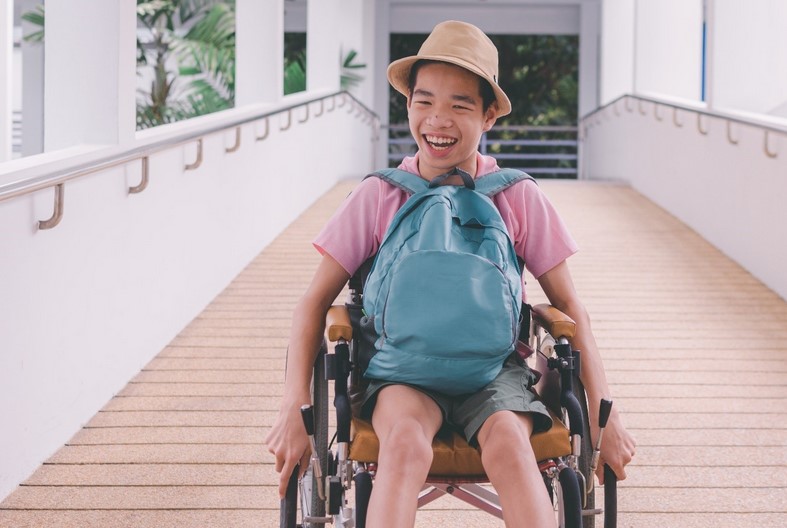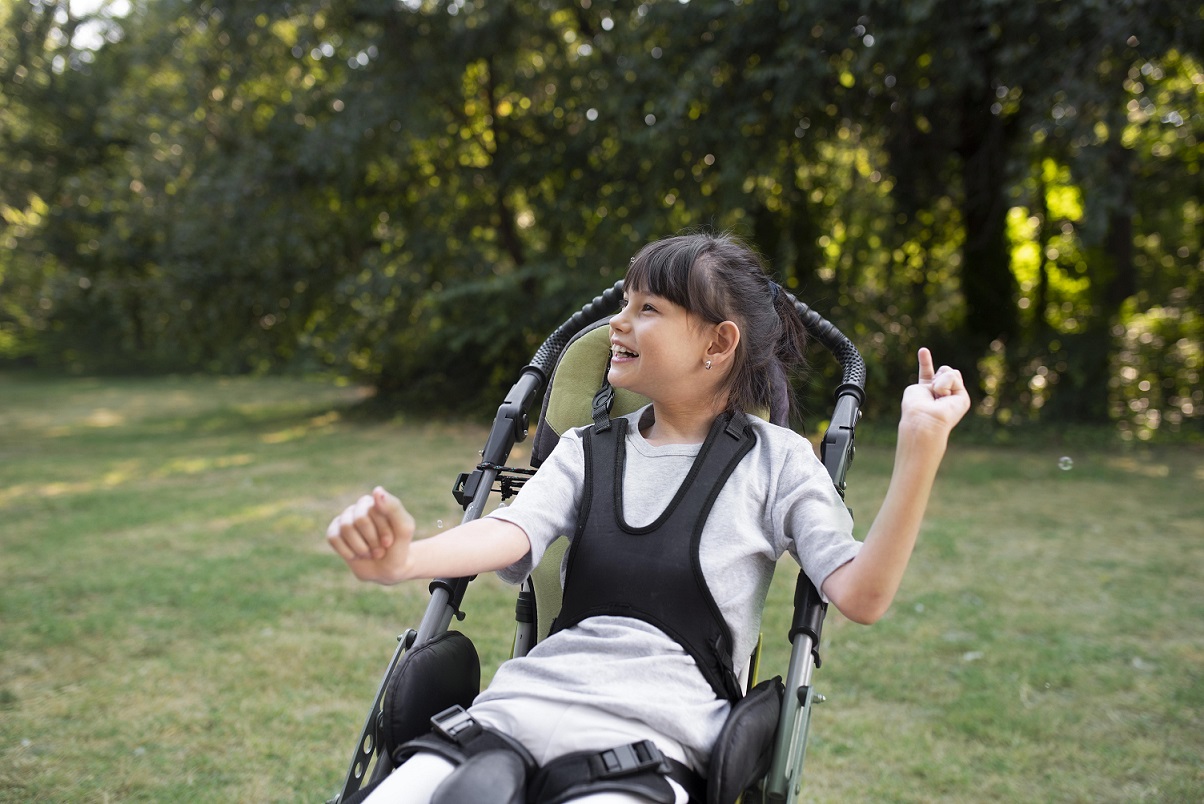Common Conditions Treated by Paediatric
Physiotherapists in Australia
Paediatric physiotherapy is a specific branch of physiotherapy that focuses on treating children from infancy to adolescence. Paediatric physiotherapists work with children and young people to improve their physical abilities, promote independence, and enhance their quality of life. In this article, we explain some common conditions a paediatric physiotherapist might treat and how physiotherapy supports children with these conditions to reach their potential.
Cerebral Palsy
Cerebral palsy is a term describing a group of conditions caused by a brain injury that occurs before, during or just after birth. This damage to the brain creates difficulties with body movement, posture and balance. Cerebral palsy is the most common childhood physical disability, and one child is born with the condition every 20 hours in Australia[i].
It is a lifelong condition and there is no cure, but therapeutic supports can help to decrease its effect on the body and improve quality of life.
There are four main types of cerebral palsy:
- spastic – in which the muscles are stiff and weak, making movement difficult
- ataxic – in which difficulties with coordination and balance result in awkward or jerky movements
- dyskinetic (or athetoid) – in which the muscles move involuntarily or get stuck in awkward positions
- mixed – which involves a combination of the above.
Paediatric physiotherapy for cerebral palsy involves using a range of exercises, therapies and assistive devices to improve motor (movement) control, balance and coordination to help children become more independent. Physios may also help with managing chronic pain, which occurs in 50% of individuals with the condition.
Muscular Dystrophy
Muscular dystrophy is an umbrella term for a group of genetic conditions that causes progressive muscle weakness and degeneration. This muscle weakness leads to increasing difficulty with physical tasks such as walking, standing up from a chair, and using the arms. It can also cause muscles to become short and tight, which may lead to deformities.
Symptoms often start in early childhood and there is no cure. The most common types in children are[ii]:
- Duchenne muscular dystrophy – which affects around 1 in 3,500 boys (it is extremely rare in girls)
- spinal muscular atrophy – which affects around 1 in 6,000 children.
Down Syndrome
Down syndrome is a genetic disorder that affects approximately 1 in 1,100 babies born in Australia[iii]. Most people have 23 pairs of chromosomes in each of their cells. In people with Down syndrome, their cells have an extra chromosome 21.
Down syndrome can cause intellectual disability, physical growth delays, and a range of other health problems (including issues with the heart, gut, bones, vision, and hearing).
There are three types of Down syndrome:
- Trisomy 21 – which is the most common and involves having an extra copy of chromosome 21 in every cell
- Mosaic Down syndrome – in which only some of the cells have the extra copy of chromosome 21
- Translocation Down syndrome – in which part or all of chromosome 21 is attached to another chromosome.
Paediatric physiotherapists support children with Down syndrome to improve their physical function, independence, and ability to participate in their families and communities using exercises and strategies tailored to their individual needs.
Down syndrome is one of the common paediatric conditions physiotherapists can help to manage.
Other Genetic Conditions
Numerous other genetic conditions can affect a child’s development and physical function.
Paediatric physiotherapists can support children with conditions including:
Angelman Syndrome
Prader-Willi Syndrome
Fragile X syndrome
Williams syndrome
Rett syndrome
and many more.
Spina Bifida
Spina bifida is a birth defect that affects the spine and spinal cord. It occurs while a baby is developing in the womb. Spina bifida can lead to leg muscle weakness or paralysis, loss of feeling in some areas of the skin, and curvature of the spine (scoliosis). This may lead to movement difficulties and disability. Children with spina bifida may also have learning difficulties and incontinence.
There are three types of spina bifida:
- spina bifida occulta – this is the mildest form, in which there is a small gap in one or more of the vertebrae. Because there is no visible defect in the baby’s back, many people with spina bifida occulta don’t know they have the condition.
- meningocele – in this condition, a sac pushes out the gap between vertebrae. This sac contains spinal fluid (but no nerve tissue) and is often visible on the baby’s back. It does not usually cause nerve damage, although some people with the condition experience minor disabilities.
- myelomeningocele – this is the most severe form of spina bifida. In myelomeningocele, a sac containing spinal nerves and membranes pushes through an opening in the vertebrae onto the surface of the baby’s back. The exposed tissue is susceptible to infection, and nerve damage can cause moderate to severe disability.
Paediatric physiotherapists support children with spina bifida to have the best possible physical function, independence and quality of life. Therapy will typically involve exercises tailored to the individual’s needs and may include prescription of mobility aids to assist with getting around.
Developmental Delay
Children with developmental delay take longer than expected to reach developmental milestones such as sitting, crawling, walking, and talking. Developmental delay can result from a number of things, such as a genetic condition, premature birth, or another factor that influences brain development before or after birth. Global developmental delay (GDD) is the term used to describe delays in two or more areas of development in children under the of five. Children with this temporary diagnosis can access support under the NDIS early childhood intervention approach. Many of these children may receive another diagnosis once they get to school age. Evidence suggests around 0.5% of Australian children are affected by GDD[iv]. Paediatric physiotherapists work with children who have developmental delays to help them achieve motor (movement) developmental milestones through exercises and activities tailored to their needs and goals.Developmental Coordination Disorder
Developmental coordination disorder (DCD) is a developmental condition that affects a child’s ability to coordinate their movements. It can result in difficulty with everyday tasks such as tying shoelaces, handwriting, dressing and playing sports. Children with DCD may seem clumsy, have poor balance, and find it hard to learn new movements. They might also get tired easily. DCD is a lifelong condition and affects 5-6% of children[v]. Paediatric physiotherapists work with children who have DCD to help them improve their motor skills and coordination through exercises and therapeutic supports customised to their needs and goals.Juvenile Arthritis
Arthritis is an umbrella term for a group of conditions that affect the joints, causing symptoms including pain, swelling, redness and stiffness. When arthritis occurs in children aged under 16, it is known as juvenile arthritis (or juvenile idiopathic arthritis or JIA).Autism
Autism is a neurodevelopmental disorder that affects communication, social interaction, and behaviour. It can also cause a range of physical symptoms, such as coordination problems and difficulty with fine and gross motor skills. Paediatric physiotherapists work with children who have autism to help them reach their goals. Read more about physiotherapy for children with autism.How physiotherapy can help children with different paediatric conditions
While the conditions listed here are very different, they have something in common – they affect a child’s ability to move, function and participate in everyday activities. Physiotherapists are experts at managing problems with movement and function. Depending on individual needs and goals, paediatric physiotherapy might involve providing therapies designed to help a child:- build muscle strength, flexibility, balance or coordination
- keep up with their peers
- reach developmental milestones
- develop skills to participate in sport or school activities
- become more independent with daily living
- access their community.
Paediatric physiotherapists might prescribe mobility aids to help children access their communities.
Physiotherapy for children with Active Ability
At Active Ability, our paediatric physiotherapists are committed to helping children have the best possible function and quality of life. We focus on working with children with disability, providing support for kids with autism, neurological conditions, and intellectual disabilities.
Our team can visit you in your preferred environment, whether that’s at home, childcare, school, or a local facility. We do not have a waiting list or charge for travel, so you can get started with therapy when it suits you and get the most from your NDIS funding.
To learn more about how we might be able to support your child and family, get in touch with our friendly team on (02) 9161 5887, hello@activeability.com.au or via our contact form.
REFERENCES:
[i] Cerebral Palsy Alliance. Facts about cerebral palsy. https://cerebralpalsy.org.au/our-research/about-cerebral-palsy/what-is-cerebral-palsy/facts-about-cerebral-palsy/. Accessed 19.4.2023.
[ii] Muscular Dystrophy Australia. FAQ About MD. https://www.mda.org.au/information/md101/#:~:text=DMD%20and%20spinal%20muscular%20atrophy,adults%20%E2%80%93%201%20in%208%2C000%20people. Accessed 19.4.2023
[iii] Healthdirect. Down syndrome. https://www.healthdirect.gov.au/down-syndrome. Accessed 19.4.2023.
[iv] Department for Education, South Australia. Review of trends in disabilities among children and adolescents. https://www.education.sa.gov.au/docs/system-performance/fraser-mustard-centre/trends-in-disabilities-among-children-and-adolescents-final-report.pdf. Accessed 19.4.2023.
[v] Raising Children Network. Developmental coordination disorder (DCD). https://raisingchildren.net.au/guides/a-z-health-reference/development-coordination-disorder-dcd. Accessed 19.4.2023.
Get in touch
hidden
Follow Us



